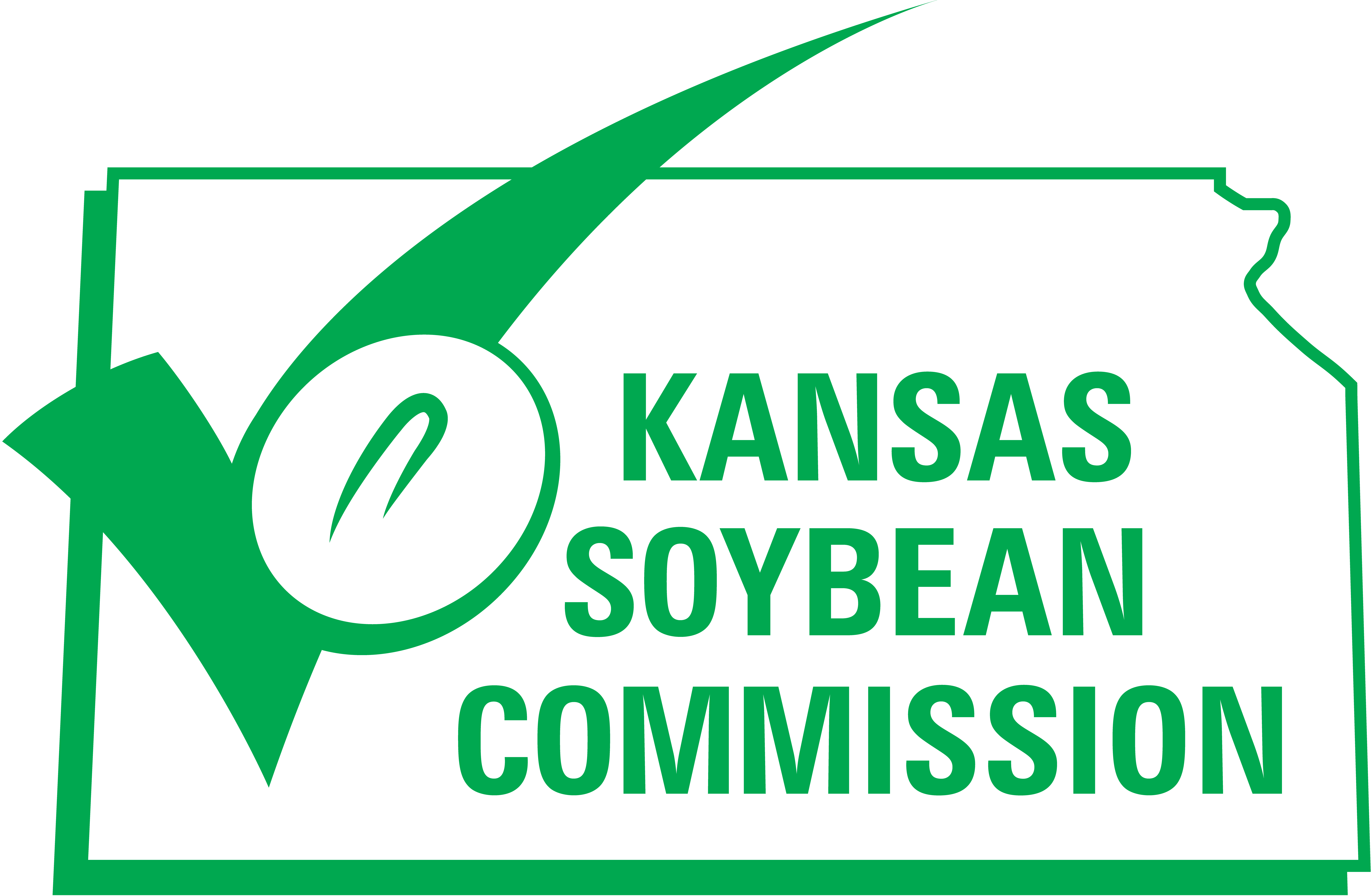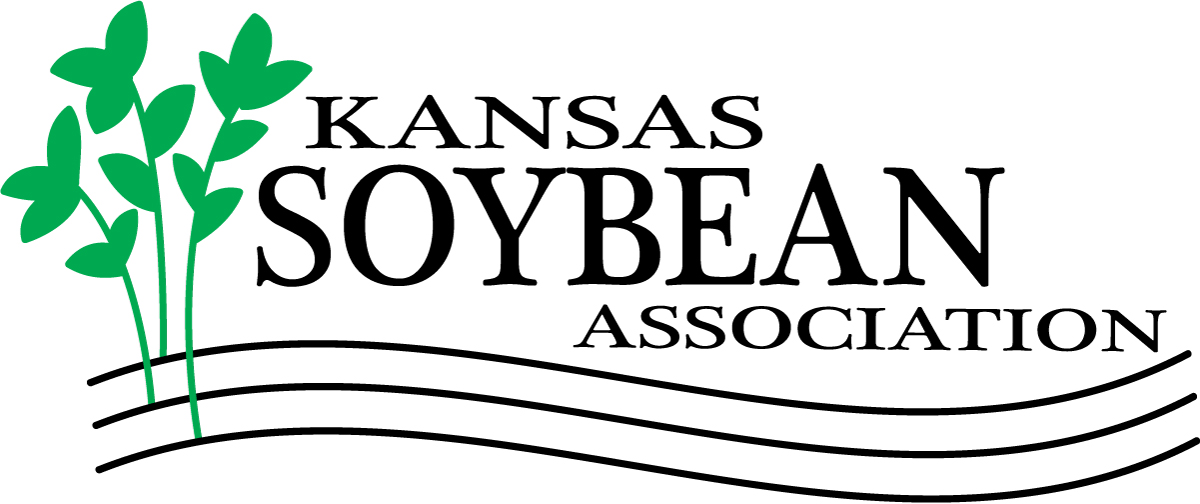KSC research delivers ‘broad, balanced portfolio’
Soybeans find new uses through climate resiliency, yield preservation and new uses research
As another crop emerges and grows, questions loom. Will an undetected seedling disease wreck my crop? Will a sudden insect infestation decimate my yield? Did I do everything in my power to grow the best crop?
Farming is not for the faint of heart because crop viability is mostly left to nature’s will. Researchers in Kansas are on the ground with a slate of new and continuing research projects aimed at identifying yield detractors and developing tools and best practices that can save crops and farmer livelihoods.
It’s a “broad, balanced portfolio” of projects, Ed Anderson, Ph.D., says. Anderson serves as the Kansas Soybean Commission’s research consultant, a role he has been in since October 2022.
“Roughly 30 percent of the KSC budget is dedicated to research,” Anderson says. “I think that’s a tremendous investment on behalf of farmers.”
He highlights that there is a range of projects from those aimed at climate resiliency, “which is huge,” to those studying yield preservation techniques. There are projects studying planting dates, soybean nutrition, soil health and fertilizer optimization.
Climate Resiliency
Dr. William Schapaugh’s “Breeding Soybean to Improve Climate and Disease Resilience and Compositional Quality” sets out to develop germplasms with resistance to important pathogens and abiotic stressors while optimizing seed composition for end use.
“Folks in Kansas know as well as anybody what drought can do to a crop,” Anderson says. “Extreme weather, intermittent flooding, long periods of drought – farmers have to be resilient to have crops that will grow under really crazy weather conditions. It’s being done.”
Following development of those germplasms, the project will evaluate and implement breeding technology, such as combining remote sensing technology with genomic selection to “improve the speed and accuracy of identifying superior breeding material for both yield and seed composition,” according to the research description. The project is an extension of Schapaugh’s previous germplasm breeding program that has brought hundreds of breeding lines into the industry.
Yield Preservation
Yield preservation is top of mind for soybean growers, making it top of mind in the research field, as well. Advancements in this area include disease and insect resistance and combatting weeds in the field.
All of these contribute to preserving the potential of a crop,” Anderson says. “K-State, in particular, has some really good programs on diseases, insects, weeds, fertility, agronomics and looking at factors like planting date and maturity groups.”
Dr. Christopher Little is continuing his project “Mitigating Soybean Root and Seedling Diseases in Kansas” project, which studies challenges such as sudden death syndrome and charcoal rot. Dr. Tania Kim’s “Development of Population-Based Tactics to Manage Key Kansas Soybean Insect Pests” project has insect resistance as the end goal. Dr. Sarah Lancaster’s “Optimizing Residual Herbicides to Manage Pigweeds in Early Planted Soybeans” project is aimed at combatting weeds in the field.
New Uses
Those represent just a few of the agronomic projects within KSC’s broad portfolio. There are many more representing additional areas of the soybean value chain, like end uses and soybean products made from high-quality protein and oil.
“The portfolio of research funded by Kansas soybean farmers includes new use projects looking at really cool opportunities to use soybeans first and foremost, but also to create safer, renewable products.”
Proof of Concept
When asked what farmers should keep in mind about the developing research results, Anderson says, “One of the things I like to remind farmers of is that a lot of checkoff research serves as standalone research. It’s valuable and gives valuable information on crop management. A lot of it is used for proof of concept and preliminary studies that make researchers and universities more competitive for federal funding and it attracts the private sector to look toward the universities for technologies.”
He adds that the investments made in research often carry long-term value and provide proof of concept for bigger programs. Researchers can leverage support from the checkoff to collect more data and prove their concept, which makes them more competitive in the industry.
“The amount of collaboration that has been accomplished today just drives the checkoff return on investment and enhances what checkoff dollars are supporting. It really, truly does.”
Short- and Long-Term Investment Value
Often times successful research outcomes look like new questions to study on top of the new insights gathered from the data. Research is a continuum, Anderson says. Projects starts with a concept that is studied in a greenhouse then scaled up in plots, and eventually those concepts need to be tested on larger acreages. What happens in the greenhouse and small scale starts to build data, but does not always replicate the larger field climate. Field research is where the impact reaches farmers.
“The Kansas Soybean Commission has ensured short-term benefits to farmers through applied research programming and generation of data, breeding lines, sharing information through field days, publishing management recommendations and promoting new growing tools,” Anderson shares.
The long-term sustained investment that farmers have in breeding programs and biotechnology programs, such as the one led by Dr. Harold Trick, are important for understanding biology and evolution of pests and ultimately finding new solutions.
See for yourself what research projects KSC is funding by visiting soybeanresearchdata.com.

